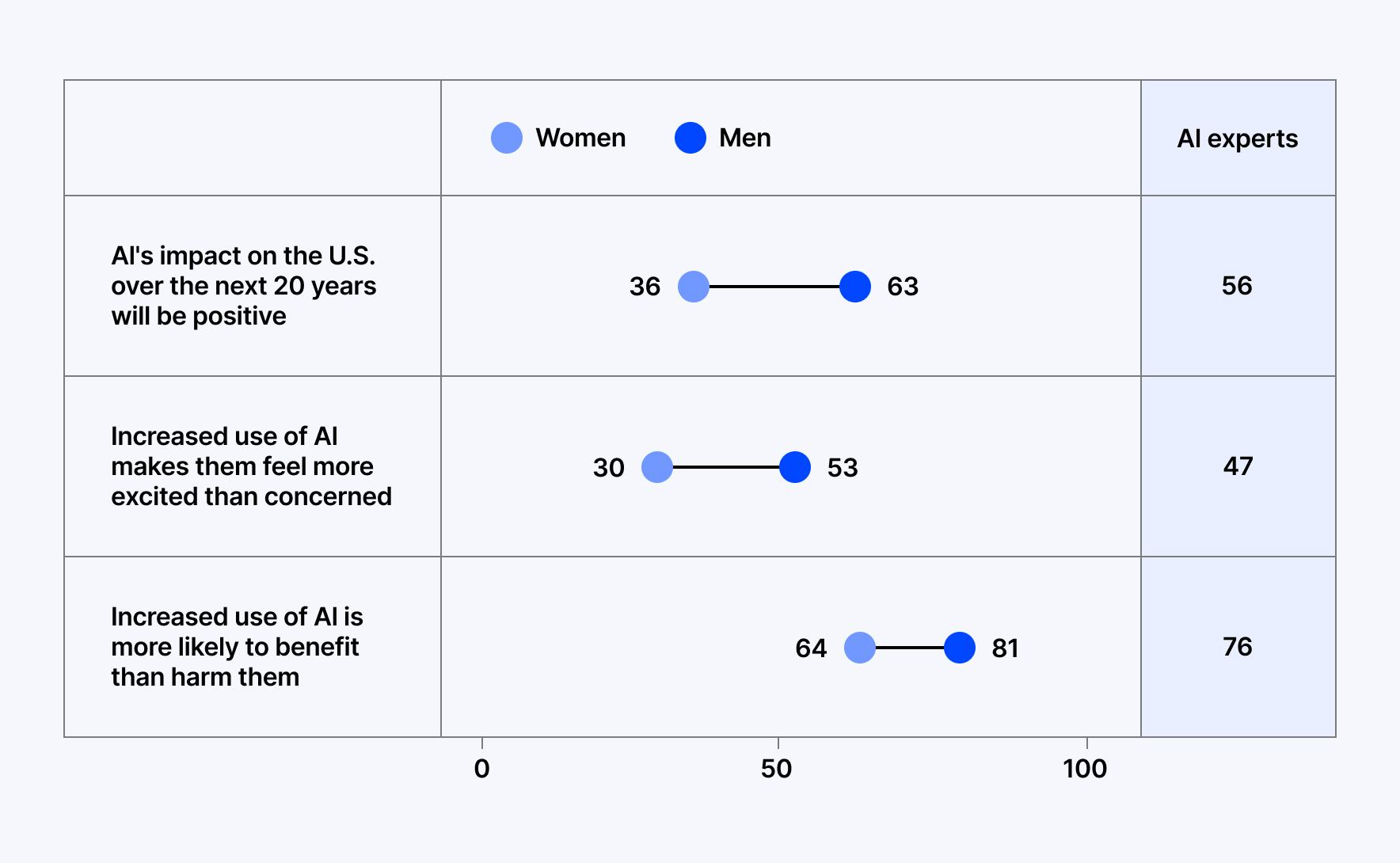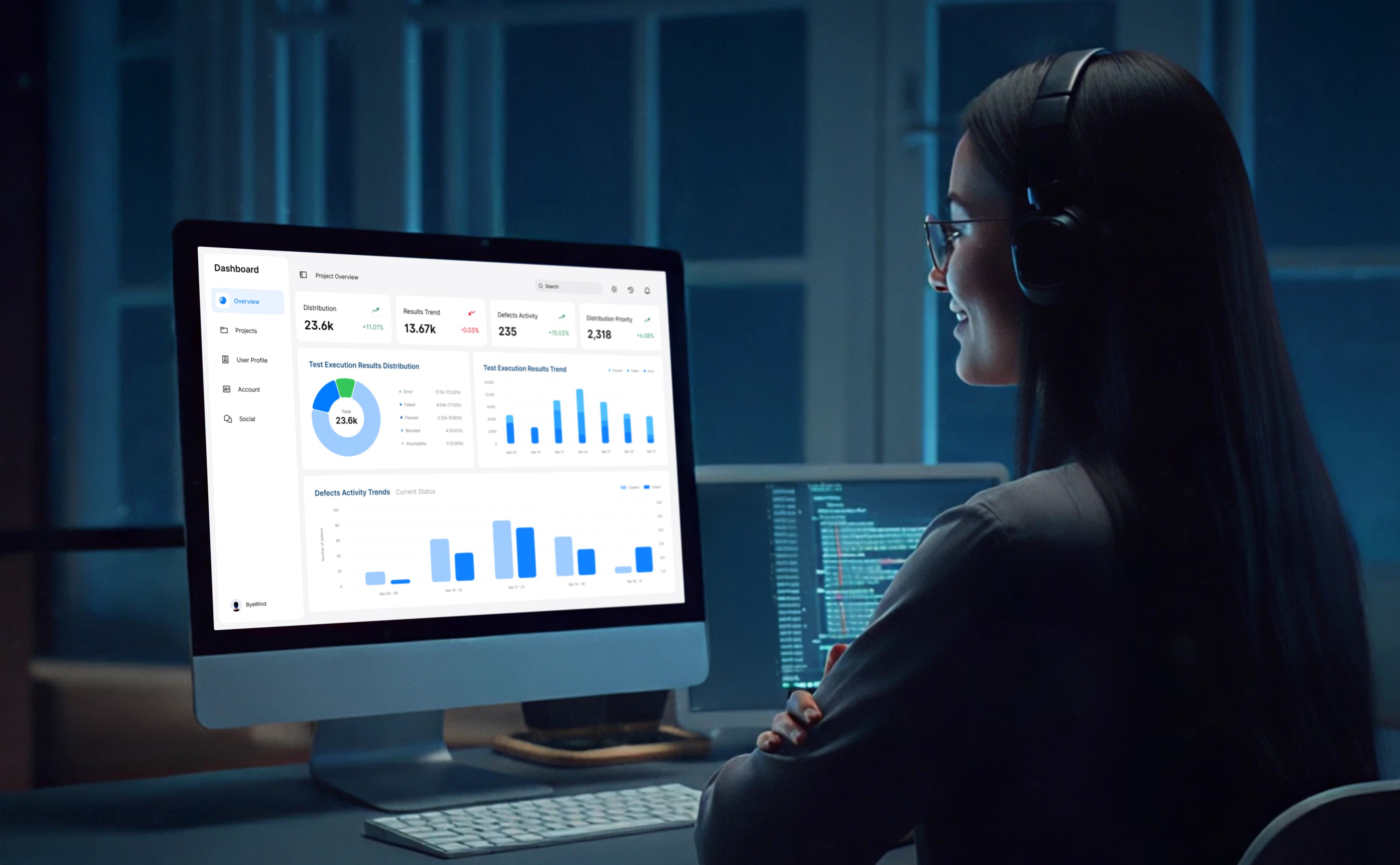AI Statistics 2025: Essential Insights for Business Leaders & Innovators

AI is no longer an idea for the future, but an important tool for helping businesses work better, as it handles complex tasks automatically and changes the way companies communicate with customers.
AI could be smarter than any one person as soon as next year. By 2029, it might be smarter than all humans together.
Elon Musk
BuiltWith reports that over 3.4 million websites are using AI now. These numbers show how fast business is changing and how businesses are trying to keep up. Hence, it’s very important to know the current state and future direction of artificial intelligence statistics. Here, we are looking at important AI stats that are changing the market. These AI facts will guide you to invest smarter and stay ahead of the competition by providing the real impact of AI technologies today.
In a Nutshell
In 2025, Artificial Intelligence isn’t just influencing businesses; rather, it’s reshaping them. Over 78% of companies are already using AI to boost performance, reduce costs, and discover new opportunities. From making smarter decisions to faster decision-making, AI is becoming the backbone of modern enterprises. As the global AI market races toward $1.8 trillion, AI statistics are the signals of where the future is headed. If you want to stay ahead, now is the time to read and understand the facts that matter.
Top AI statistics for analytics in 2025
General Adoption of AI in Analytics
AI adoption in analytics is experiencing a significant rise. According to KPMG’s global study on AI, 66% of people in the world use AI regularly, and about 83% believe AI’s use will result in a wide range of benefits. This overall AI integration highlights AI’s role in major business activities, including analytics, where AI brings up new and more opportunities.
Impact of AI Analytics on Business Performance
Better business performance is an outcome of AI’s ability to analyze data closely. According to Gartner, companies that started using AI early have experienced noticeable improvements. The majority of them reported a 22.6% improvement in productivity, a 15.8% revenue increase, and a 15.2% cost savings. These results mainly come from faster data analytics and smarter decision-making.
Artificial Intelligence Statistics: AI and Job Automation
The impact of AI on employment is becoming more realistic, while concerns about job loss remain. According to Goldman Sachs, by 2030, generative AI could automate up to 300 million full-time jobs worldwide. However, the report also highlights that many of the job roles will be augmented or refined instead of disappearing completely. Candidates will need to adapt to the AI era accordingly, and this hints at a major shift towards the collaboration between humans with AI, rather than replacing human skills completely.
AI-Driven Analytics in the Global Economy
Artificial Intelligence will have a major economic impact worldwide. According to a PwC report, by 2030, AI could make up to USD 15.7 trillion to the global economy, which is more than the current combined GDP of China and India. In this total, about USD 6.6 trillion will be from productivity gains, especially via AI-driven analytics and automation. This reveals how powerful AI and artificial intelligence data can be in boosting global productivity and economic growth.
Fast Artificial Intelligence Facts
- 78% of organizations started using AI in 2024.
- By 2030, AI will contribute $15.7 trillion to the global economy.
- The global AI market will reach $1.81 trillion by 2030.
- Technologies, including AI, are expected to create 11 million new jobs while replacing 9 million other jobs.
- When AI starts automating more tasks, 40% of employers are expected to reduce their workforce.
- Generative AI attracted $33.9 billion worldwide in private investment in 2024.
- Generative AI is already delivering up to 30% productivity gains in service operations.
- Only 46% of people worldwide are willing to trust AI technology, despite 66% using AI regularly, and 70% believe national and international AI regulation is required.
- ChatGPT's user base doubled in recent weeks, reaching 500 million weekly active users.
AI Demographics
To understand AI’s impact better, knowing who is using AI is a must.
‣ AI Demographics by Age
AI's most active users are young adults, particularly in the workplace. According to Pew Research Center, 17% of employees under age 50 say at least some of their work is done with AI, compared to 13% of those aged 50 and above. Though their views on how AI will affect society overall vary, younger people are generally more familiar with it.
‣ AI Demographics by Sex or Gender
The viewpoints of men and women are different in the way they see and use AI. According to Pew Research Center, 22% of men believe AI will benefit the US, while only 12% of women feel so. This difference is even wider among experts. Among expert men and women, the gap is even bigger. 63% of men think AI will have a positive impact, while only 36% of women experts agree with this.
A Harvard Business School study also found that women are about 20% less likely than men to use generative AI tools, which shows a clear difference in comfort and adoption levels. This kind of study helps us track how different groups of people view and use AI over time.
‣ Artificial Intelligence Market Size
The global AI market is growing very fast. In 2024, it was about $279 billion, and it’s expected to grow to $391 billion in 2025. By 2030, it could reach $1.8 trillion, growing at 35.9% per year. This huge growth shows that AI is a big opportunity for innovation and investment.
AI Usage Statistics
AI Can Help Businesses Scale
Companies and businesses grow faster with AI’s personalized services. According to McKinsey & Company, to get the most from AI, many organizations are changing how they work. To improve profit (Earnings Before Interest and Taxes), redesigning workflows with AI plays a key role. In short, the businesses that use AI well are improving faster and delivering better outcomes to their investors.
Nearly Half the U.S. Population Uses Voice Assistants
AI-powered voice assistants are now a regular part of our day-to-day life. According to Statista, around 142 million people in the US used voice assistants in 2022, which is nearly half the country’s population, and it’s expected to rise to 157.1 million by 2026, showing how AI continues to integrate naturally into daily routines. This growth highlights more opportunities for businesses in voice commerce and customer interaction.
Companies Use AI to Address Skill Shortages and Environmental Challenges
To deal with talent shortages, many businesses are turning to AI. Based on the Nash Squared report, 51% of global tech leaders say their companies are facing an AI skills shortage, almost twice as many as the year before (28%). It's hard to find AI skills, showing the biggest jump in demand in over 15 years. Overall, AI isn’t just creating new challenges; rather helping to solve them.
Services Hold 39.64% of the AI Market Share
The main part of the growing AI market is from the service sector. Grand View Research highlights its importance that, in 2024, 35.83% was the share of software, but services like AI setup, consulting, and support are growing faster. This is evidence of how businesses rely on expert help to use AI effectively.
Artificial Intelligence Growth Statistics
The Global AI Market is Expected to Reach $390.9 Billion in 2025
Even though different studies report slightly different numbers, they all conclude that the global AI market will be worth a lot in 2025. For instance, Grand View Research estimates it’ll reach about $390.0 billion, while Statista puts it at $244.22 billion. Even though the numbers vary, both reports show how fast the AI market is growing.
More Than 78% of Companies Have Adopted AI in Some Way
Most of the businesses use AI today, and the number is still rising. A McKinsey report found that 78% of companies are already using generative AI in at least one area, up from 55% the year before. Similarly, Deloitte’s research shows that 79% of business leaders expect AI to transform their companies within the next three years. These numbers show how important AI has become for modern business.
AI in the Workplace
81% of Employees Perform Better with AI
Generative AI is a helper for employees to do their jobs faster and more efficiently. According to Gartner, companies using AI have seen a 15% to 30% increase in productivity. This indicates AI tools can make everyday work easier and more effective than before. A global study by Slack's Workforce Lab says 81% of AI users reported enhanced productivity and work quality. This rise in AI adoption is translating into substantial productivity gains.
Understanding Data Is the Top Workplace Task Employees Would Use AI for
In the Microsoft Work Trend report, “Will AI Fix Work?”, they state:
People are also looking for AI to assist in finding the right information and answers they need (86%), summarizing their meetings and action items (80%), and for planning their day (77%)
These figures indicate a strong employee desire for AI to assist with data awareness, information retrieval, and merging, all of which are important aspects in understanding data.
AI Improves Employee Work-Life Balance
By handling boring, routine tasks, AI is becoming a helpful tool for improving work-life balance. According to Adecco Group, AI saves workers about one hour each day, and 27% say it has improved their work-life balance. Similarly, the HP Work Relationship Index 2024 found that 60% of AI users feel they now have a better balance between work and personal life. These findings reveal how AI is helping people work more efficiently and enjoy more time for themselves.
Machine Learning and Statistics AI
Machine Learning Shows High Accuracy Rates
The accuracy of Machine Learning (ML) models influences their success as they are designed to make smart predictions or decisions. While high accuracy is a general measure to describe ML’s strong performance, several models do reach very high accuracy levels, particularly in areas like cybersecurity, where threat detection is critical. As Google Developers explain, accuracy is a key part of evaluating how well an ML model works and improving.
AI and Machine Learning are Critical for 69.1% of Marketers
The majority of marketers consider AI and Machine Learning (ML) as must-have tools for their success. From personalizing messages, improving decisions, and creating better strategies, these technologies help them analyze a large volume of data. According to Influencer Marketing Hub’s 2024 AI Marketing Benchmark Report, 69.1% of marketers say AI and ML are critical to their marketing success. McKinsey’s report says generative AI is already transforming marketing by helping create content and personalize customer experiences. Moreover, the 2025 PwC survey found that 73% of business leaders believe AI agents will give them a big competitive edge in the next year. This is a reflection of how important AI is for staying ahead in the market.
Ready to Transform Your Business with AI Solutions?
Let's talkLoading...
AI in Marketing, Customer Service, and Sales Statistics
AI is becoming a game changer across marketing, sales, and customer service. Recent studies say how widely AI is being adopted and the real results it drives.
AI Market Growth in Sales & Marketing
The AI market for sales and marketing is growing fast. It’s expected to jump from $57.99 billion in 2025 to $240.58 billion by 2030, growing at a strong rate of 32.9% per year.
AI in Customer Service
- 51% of consumers prefer talking to bots over humans for fast service.
- 80% of companies are already using or planning to use AI chatbots.
AI in Marketing
- 41.29% of marketers say AI in email marketing brings in more revenue.
- 85% of marketers use AI tools to help create content.
- 51% of marketing teams use AI specifically to improve content performance.
AI in Sales
81% of sales teams are now using or testing AI tools to improve how they work.
Conclusion
The remarkable development of Artificial Intelligence (AI) in 2025 is transforming the ways industries operate and demonstrating what is possible in commercial industries across the globe. Current facts about AI clearly illustrate that using AI is not a choice; it is a critical component of organizational advancement, efficiency, and competitive intelligence. For operators and decision-makers, understanding these important AI facts will position them to execute informed strategic decisions going forward.
At Webandcrafts, we are strongly aware of the influence manual intelligence can have in changing the scope of how your business operates. As global experts in modern software development, we are uniquely positioned to provide you with insight aligned with the AI revolution, everything from custom AI development to implementations of intelligent data systems that give you useful insights and better results.
Looking to Leverage AI for Your Business Growth?
Let's talkLoading...
Discover Digital Transformation
Please feel free to share your thoughts and we can discuss it over a cup of tea.










